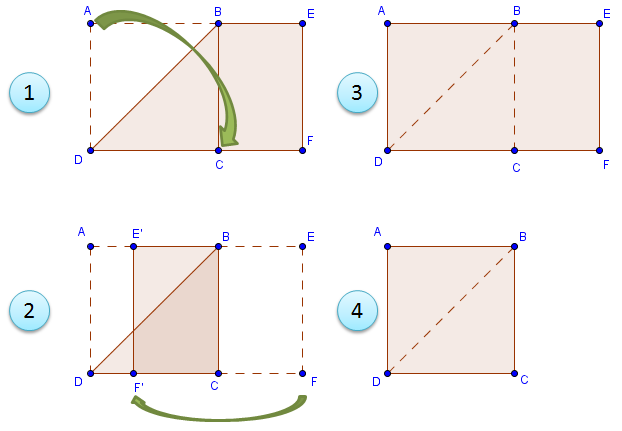Using Paper Folding to Introduce the Notion of Proof
Two years ago, I worked as part-time geometry instructor in a technical school near our university. Most of the students in that school were quite clueless about the notion of proofs, so I tried to find ways to introduce proofs in an intuitive manner.
One lesson I developed was on proving that a quadrilateral formed from paper folding is a square. I let the students create a square from a piece of bond paper without using any measuring instrument; only folding and cutting were allowed.
As expected, most of the students used the method shown in the figure above. For the sake of discussion, we label the corners and critical points of the bond paper. Most of the students constructed the square using the following steps (see figure): » Read more
